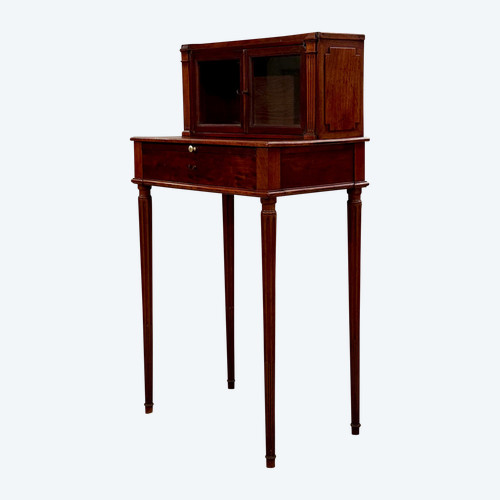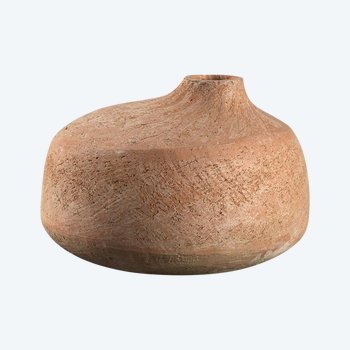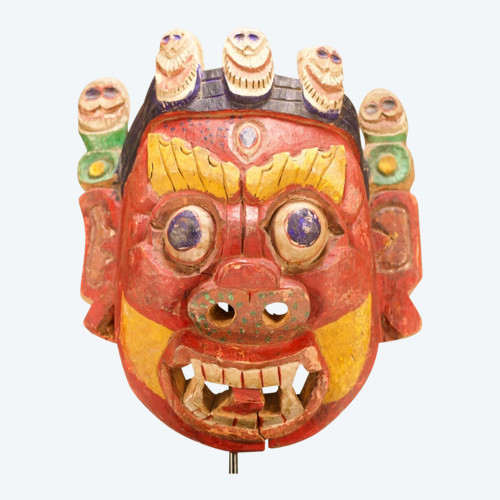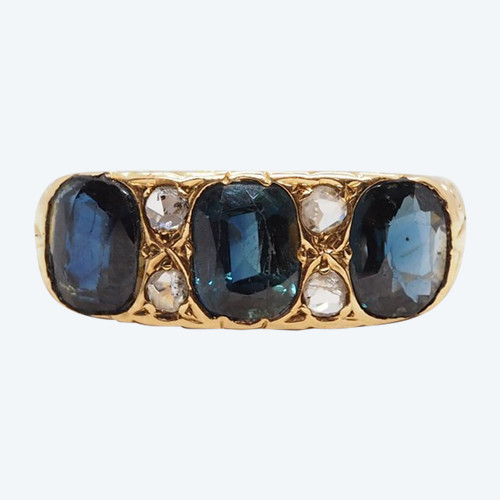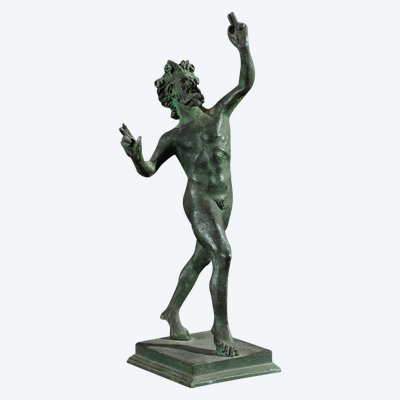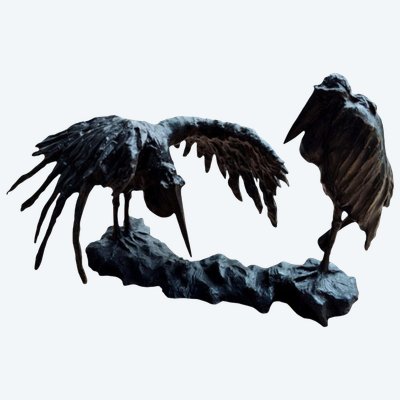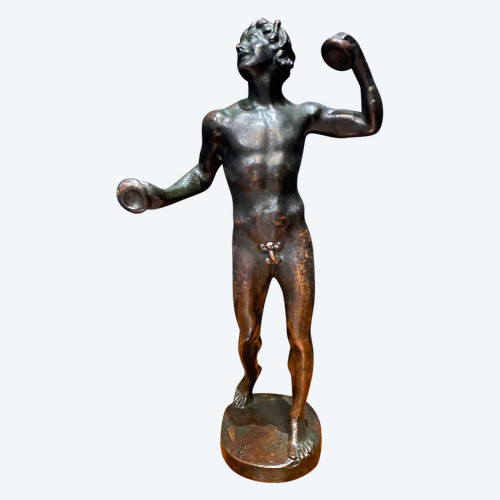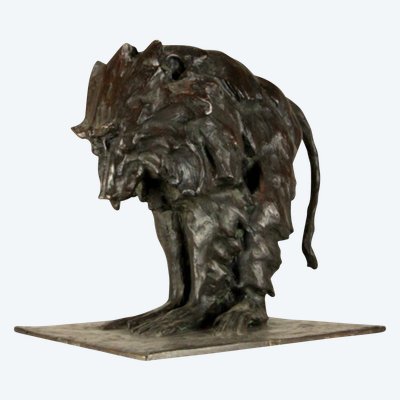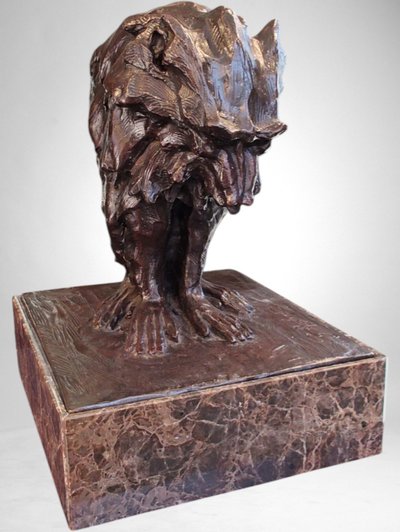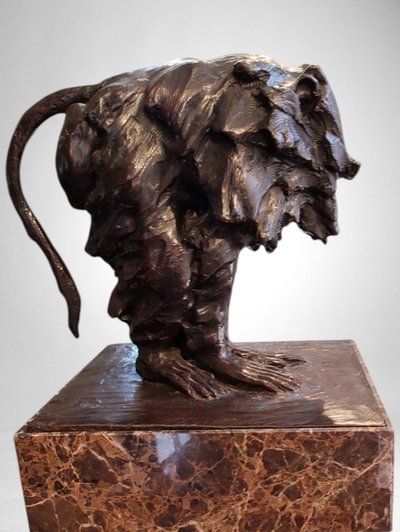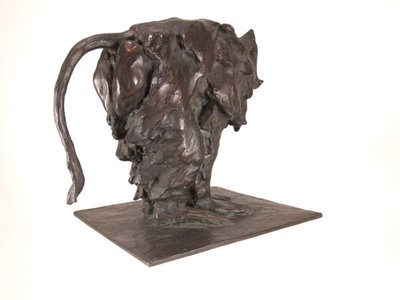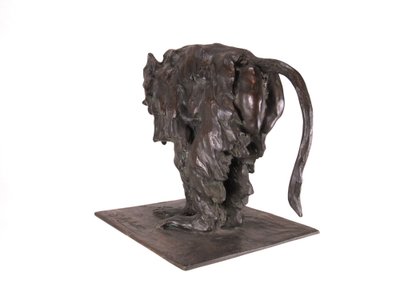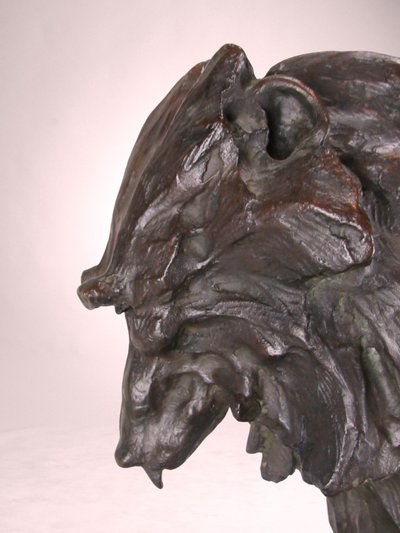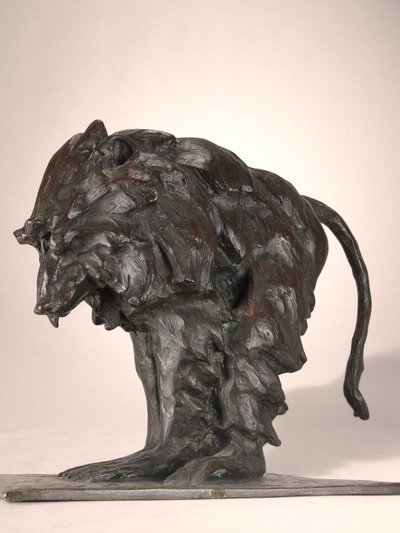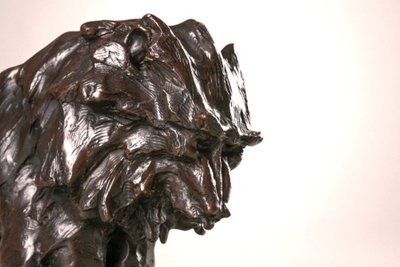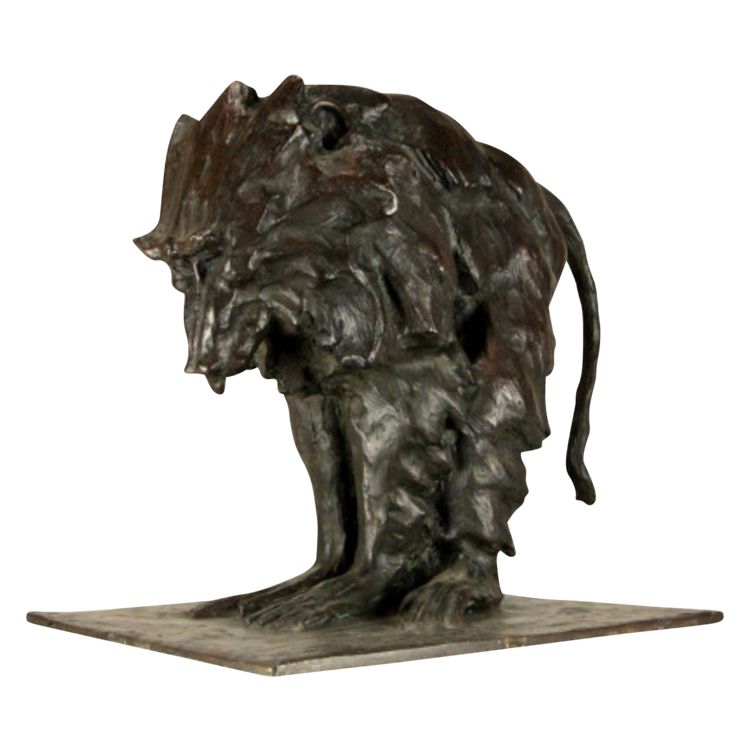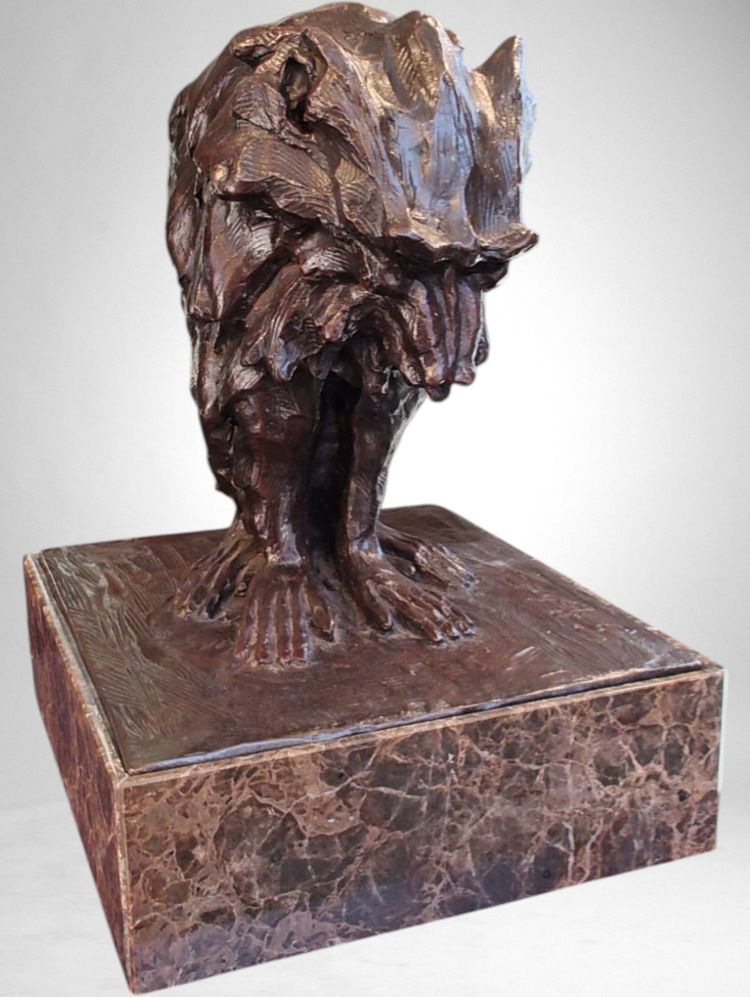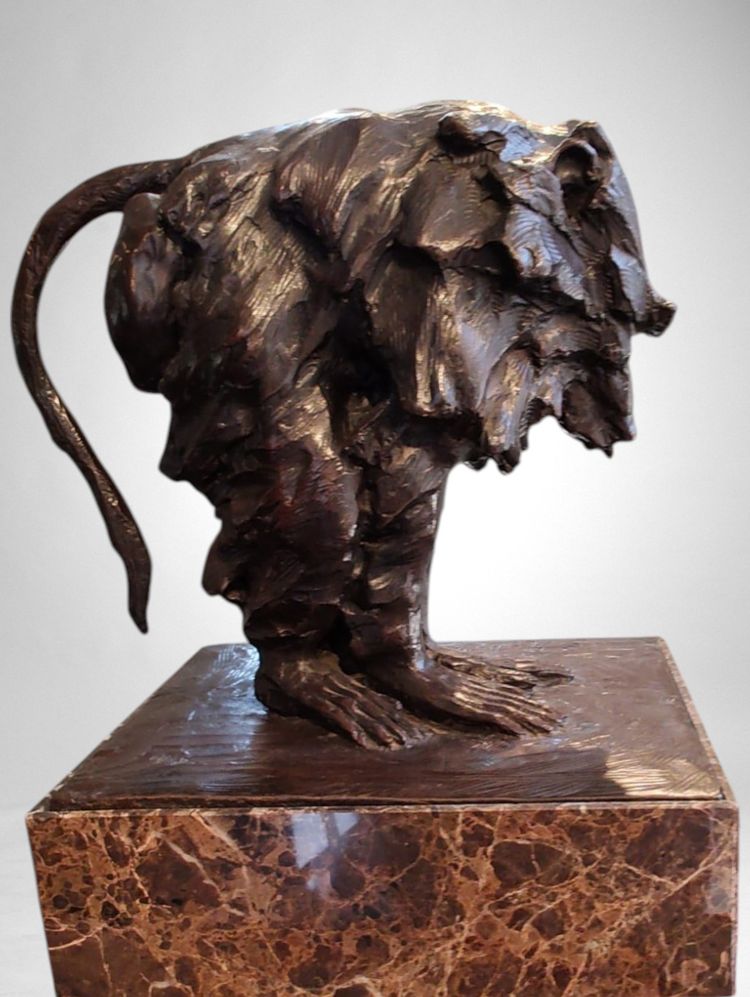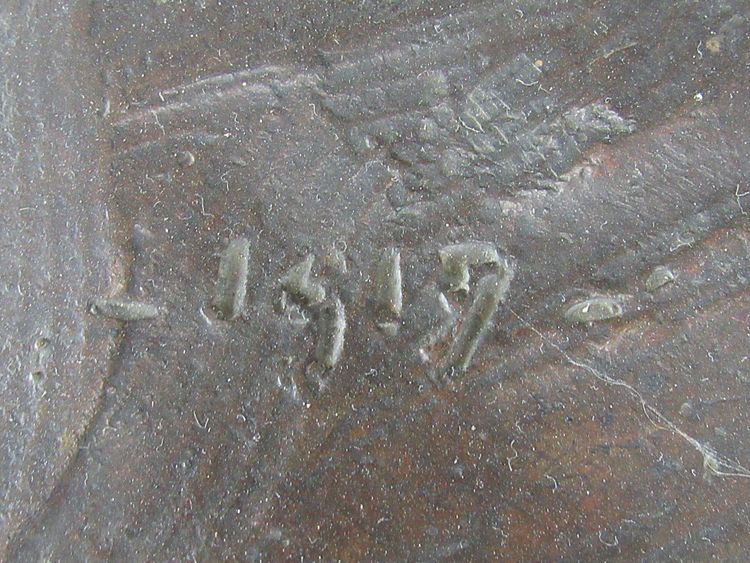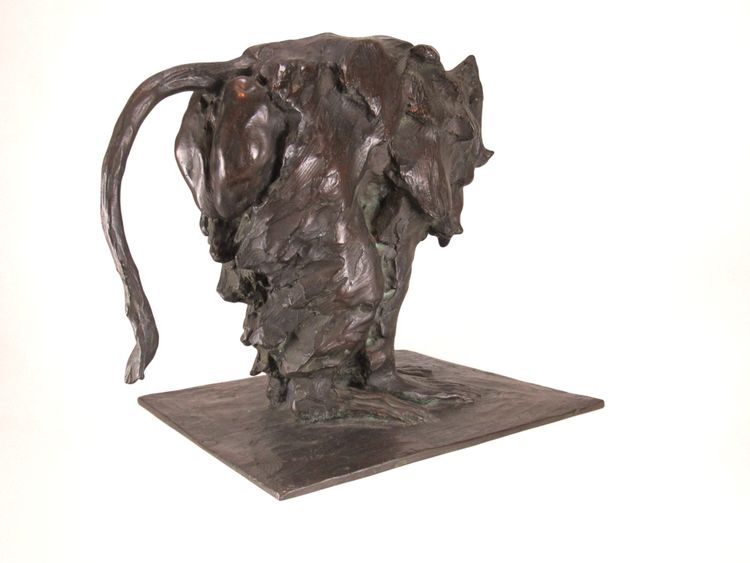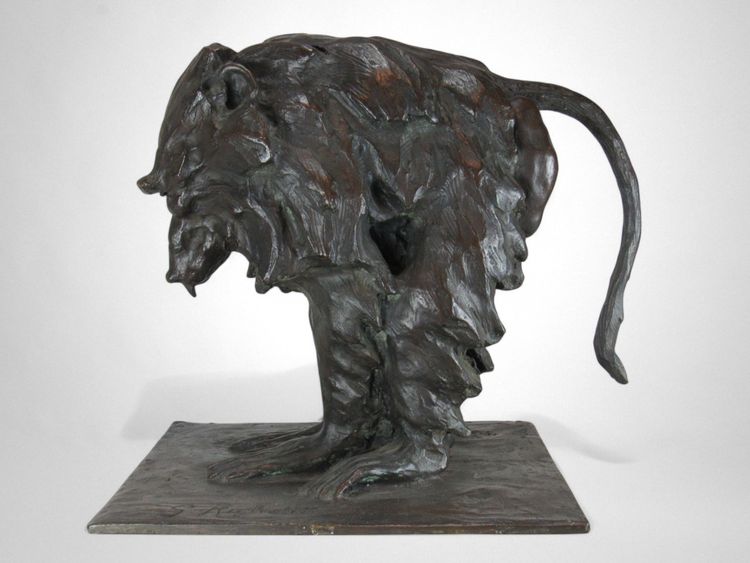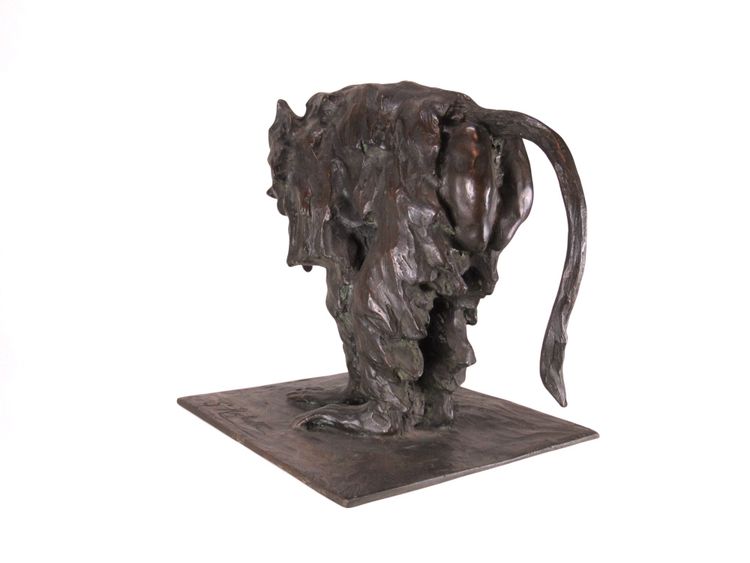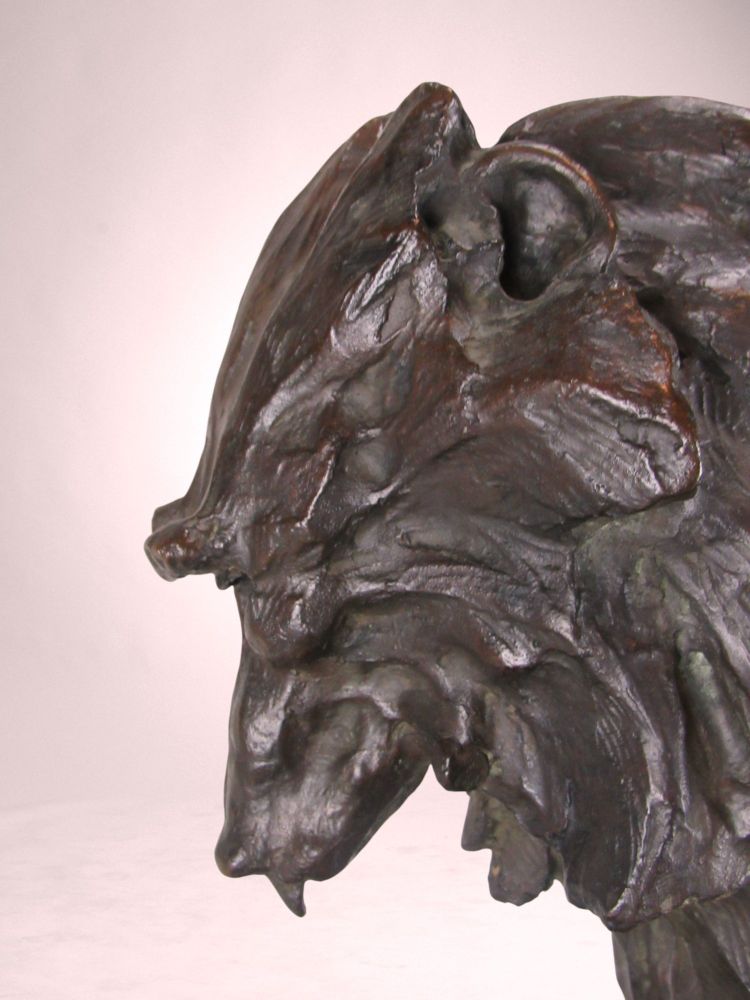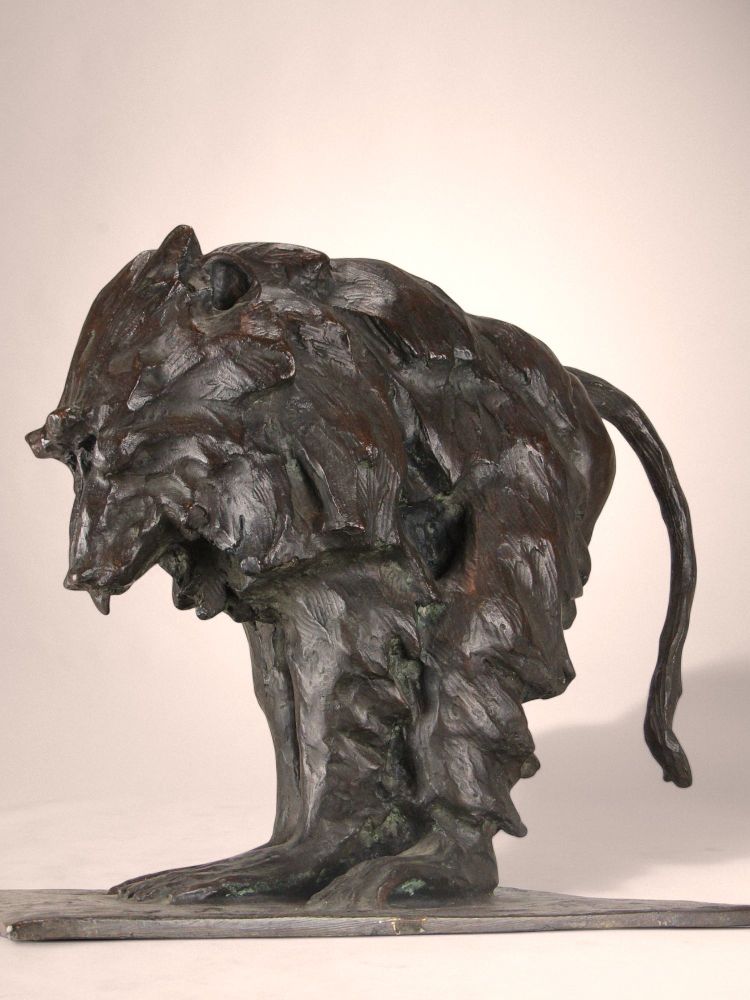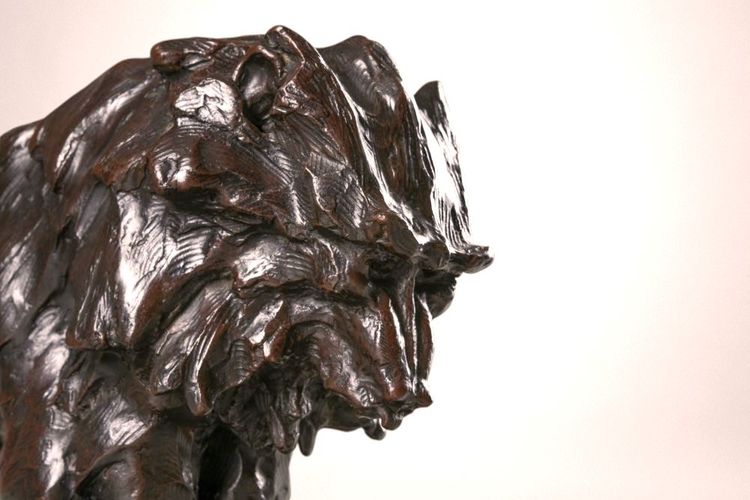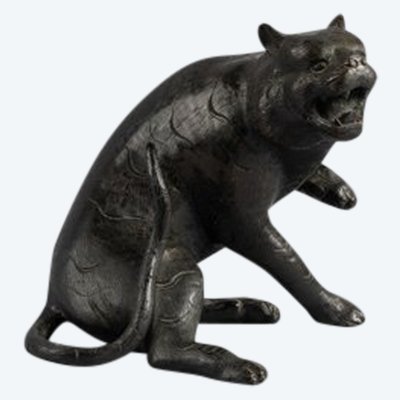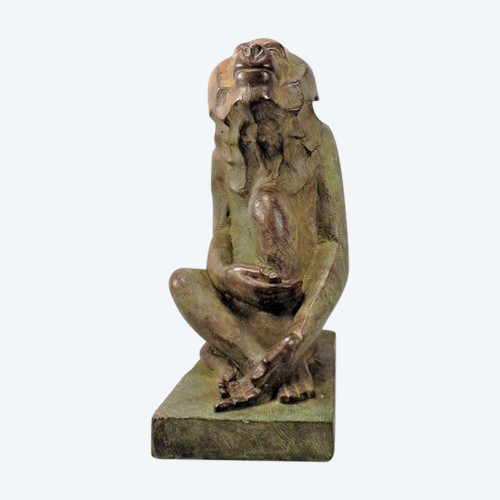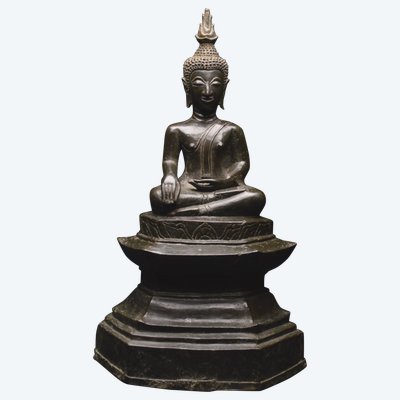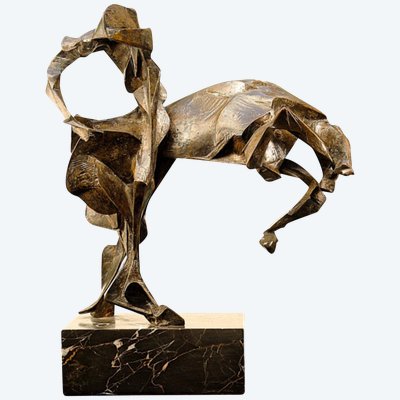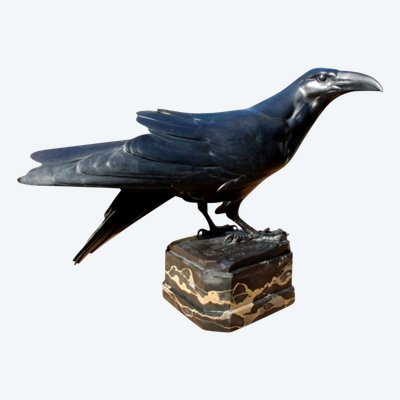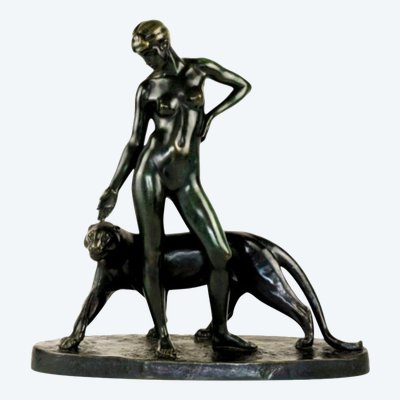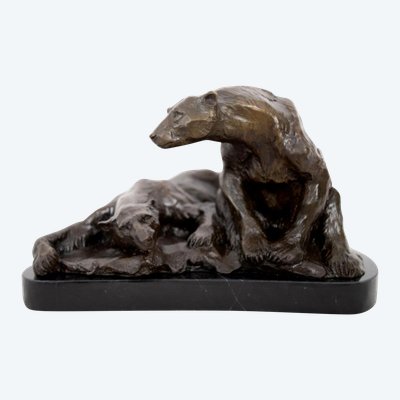This description has been translated and may not be completely accurate. Click here to see the original
This rare and striking sculpture by Guido Righetti, entitled Babouin sacré hamadryas, is a remarkable study of this sacred primate, treated in an expressive modern idiom. Modeled in 1917, the work embodies Righetti's unique sensitivity to the animal form, while evoking the subject's spiritual dignity and majestic calm. The baboon is depicted seated, in a collected, meditative posture, its massive head bowed in an almost ritualistic gesture.
The modeling is vigorous and deeply expressive. The surface is animated by striations, notches and sculpted planes that convey the thick folds of the fur and the almost architectural structure of the body. The patina, a dark brown enriched with warm reflections and greenish nuances, accentuates the volumes and gives the work an organic presence.
Unlike Righetti's other animal subjects, often dynamic or combative, this baboon imposes a sacred silence, an almost mystical interiority. The modeling focuses attention on the head and upper body, whose monumental mane recalls certain archaic representations of power and sacredness. Despite its relatively modest dimensions, the work exudes a sense of monumentality.
This sculpture is referenced in Poletti & Richarme's monograph on the artist (Guido Righetti, UDB, 2007), page 40, under number 13. The present print precedes the contemporary editions of Univers du Bronze (UDB) and is most probably a period print, made during the artist's lifetime. It is distinguished by its rich surface and authentic patina.
Mounted on a custom-cut black marble base (10 cm high), the sculpture is soberly but elegantly presented, highlighting its plastic strength.
The workmanship of Baboon Sacred Hamadryas follows in the footsteps of the great modernist animal sculptors of the early 20th century. Like Rembrandt Bugatti, his contemporary and former pupil of Paolo Troubetzkoy, Righetti gives his animal subjects a psychological dimension, between naturalism and formal abstraction. Troubetzkoy's influence is evident in the fluid modeling and spontaneity of gesture, which reveal the artist's hand and emotion in the very material of the bronze.
Although less well known than some of his contemporaries, Guido Righetti occupies a singular place in modern animal sculpture. His bronzes are sought-after for their expressive intensity, the richness of their material and the silent poetry of their relationship with life. The sacred baboon hamadryas is a rare and profound example, revealing the animal's inner strength and the artist's sculptural intuition.
Ref: GGWP51TY9K
 Large Terracotta Vase, France, 1960s
490 € EUR
Large Terracotta Vase, France, 1960s
490 € EUR
 Garter Ring In Gold Sapphires And Diamonds
1.190 € EUR
Garter Ring In Gold Sapphires And Diamonds
1.190 € EUR

